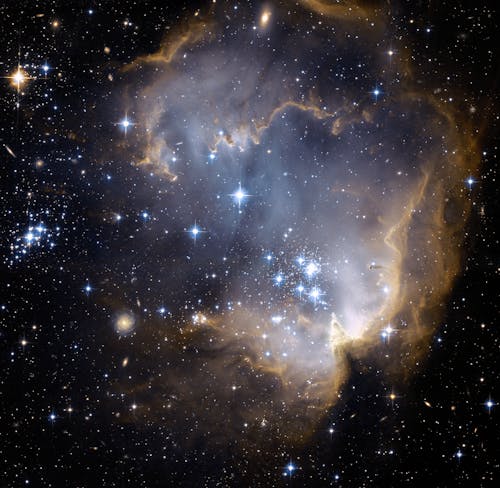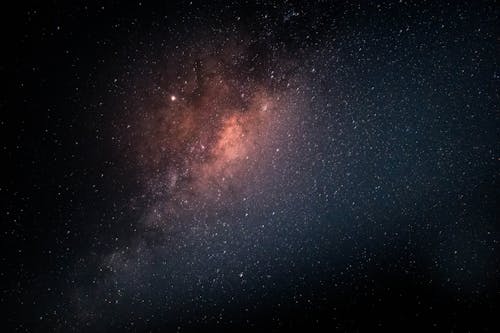There are possibility of life in space in any planet look like earth?

1. There are aliens (extraterrestrial intelligence)
・ There are many earth type planets. 200 billion stars x 8% x 22% = 4 billion stars in the galaxy alone
-If 1% of intelligence is born, 40 million!
2. But the speed of light can not be exceeded
-If exceeded, time machine is possible. When it comes to history of the universe is rattling
・ Interchange between galaxies is almost impossible (one way 2.39 million years to Andromeda galaxy)
The discovery of a terrestrial planet has been a topic of astronomy in recent years.
And on November 4th, the UCLA Berkeley team made an astonishing announcement.
"Earth-like planets exist in 22% of stars similar to the sun"

According to the observation results of the Kepler Space Telescope, which had been put into operation in August, among the 42000 stars examined, the terrestrial planets (the size is equal to or twice as large as the Earth, and the planetary distance is close It was only ten to have).
However, because the Kepler Space Telescope observes using eclipses of stars and planets (due to the fact that the light of stars becomes dark), observation does not take place unless the plane of revolution of the planets coincides with the direction from the earth.
If it is corrected, it will become the above conclusion.
Then, since there are 200 billion stars in the galactic system alone, there will be 44 billion "earth-like planets". No, it's actually a "sun-like star", so if it's a G-type main series star, that's 8% or so at 4 billion.
If 1% of intellectual life is born, it will be 40 million.
This galaxy is full of 40 million kinds of intelligent life! ! !
The story is not so easy.
The duration of the civilization, the duration of the species is an issue.
For example, the Earth itself is a "star on which an intelligent life was born", but what if aliens had visited 100 million years ago? The aliens would have returned to see the flock of dinosaurs.
There is not much difference in 100,000 years ago. We would have ended without being able to communicate.
So what if it's over 100,000 years?
Does humanity maintain the present civilization even after 100,000 years?
It may already be destroyed as a seed.

The 40 million intelligent creatures are separated by the life of their civilization.
Therefore, even if the life span of each civilization is as long as 100,000 years, fewer than a thousand civilizations exist simultaneously in the galaxy.
If the speed of light can be exceeded, there is no problem.
The warp is repeated like the space battleship Yamato, and it is a round trip in 1 year to Iskandar 148,000 light-years ahead.
You will be able to freely interact with the 1000 intellectual life entities (aliens). But, as mentioned above, it is probably muri. The speed of light can not surely be exceeded.
Then, first of all, interaction with intelligent life outside the galaxy is hopeless. Since the adjacent Andromeda Galaxy is 2.39 million light-years away, it takes 5 million years for the fastest round trip. There is no civilization.
Even within the galaxy of 100,000 light years in diameter, if 1000 civilizations are evenly distributed, the nearest civilization is more than 3000 light years away.
At the present scientific level, it has reached only 0.02% (60km per second) of the speed of light (300,000km per second), so the destination is far, but it is possible to sublight sailing somehow, so after all to the next It takes over 3000 years.
How many civilizations can we meet before our civilizations perish?
Yes, the problem is not aliens.
Earth-like planets are commonplace, and there are probably many intellects born there. And among them there will be those who realize sub-light navigation and travel to space with overwhelming technology.
But the barrier of time stands still.
The problem is how long the civilization itself will last and how long the civilization you visit has. If we truly want a bond with aliens, we have to have this civilization for 100,000 years.
About two billion years ago, Andromeda swallowed another giant galaxy. The Milky Way Galaxy is one too
The Andromeda Galaxy is the most distant object visible from the earth with the naked eye. Researchers at the University of Michigan have announced that the Andromeda Galaxy, which is believed to be similar to the Milky Way Galaxy we are in, has in fact swallowed up the giant galaxy that existed about 2 billion years ago.
The phenomenon that the galaxy swallows the galaxy is not uncommon, for example, the M87 galaxy in Virgo has been seen to have grown large traces while swallowing the nearby small galaxy.
And the Andromeda Galaxy is also considered to have incorporated some galaxies into itself by the time it reached its present size. However, I do not know very much about how many galaxies have been taken in and grown specifically.
However, in the last few decades, humanity has been able to use computers to carry out advanced calculations. And when researchers at the University of Michigan used computer modeling to analyze Andromeda galaxies, most of the globular regions that surround the galaxies, called halos, consisted of galactic debris that had previously existed separately. I got the result that
The Milky Way Galaxy and the Andromeda Galaxy form a group called Local Galaxy Group. The largest galaxy in this galaxy group is Andromeda, and the second is the Milky Way Galaxy. And the Andromeda Galaxy is accompanied by a small satellite galaxy M32.
M32 is a very small galaxy, and although it is composed of some old stars like the Andromeda galaxy etc., it has the unusual feature that many young stars are also present.
And by computer analysis, it is estimated that this M32 was once estimated to be a huge galaxy next to Andromeda and the Milky Way Galaxy. Although this galaxy, called M32p, was the third largest in the local galaxy group, it seems to have been swallowed by the Andromeda galaxy about 2 billion years ago, which is relatively recent in space.
This discovery is not only about how the universe around us became the present appearance, how the galaxy grows, but also what properties the largest galaxy has among our fellows It can be said that it also indicates
The Andromeda Galaxy is accompanied by a blue shift whose color usually looks more blue. This indicates that the Andromeda Galaxy is approaching toward our direction, and it is believed that it will collide with the Milky Way Galaxy and merge in about 4 billion years from now.
Well, from here on, it's a snake foot, but what comes to mind is what happens to our solar system if Andromeda and the Milky Way Galaxy collide. Researchers at the Harvard Smithsonian Center for Astrophysical Physics said that in 2007, approximately 2 billion years from now, the gravity of the approaching Andromeda galaxy will cause the solar system to be ejected from the Milky Way galaxy with a probability of about 12%. We announced the galaxy transfer theory to join the Andromeda Galaxy with a probability of less than 3%. And by that time, I could see the collision between Andromeda and Milky Way Galaxy from Earth.
If the theory is correct, the futuristic people who are seen in the special seat with a large spectacle show in the universe are not a little envious. However, the solar system leaving the Milky Way Galaxy will be exposed to much stronger cosmic rays than now, and by that time the Earth will not be able to develop a radiation removal device (?) To protect the Earth. It is possible to say that the living thing of is destroyed.

1. There are aliens (extraterrestrial intelligence)
・ There are many earth type planets. 200 billion stars x 8% x 22% = 4 billion stars in the galaxy alone
-If 1% of intelligence is born, 40 million!
2. But the speed of light can not be exceeded
-If exceeded, time machine is possible. When it comes to history of the universe is rattling
・ Interchange between galaxies is almost impossible (one way 2.39 million years to Andromeda galaxy)
The discovery of a terrestrial planet has been a topic of astronomy in recent years.
And on November 4th, the UCLA Berkeley team made an astonishing announcement.
"Earth-like planets exist in 22% of stars similar to the sun"

According to the observation results of the Kepler Space Telescope, which had been put into operation in August, among the 42000 stars examined, the terrestrial planets (the size is equal to or twice as large as the Earth, and the planetary distance is close It was only ten to have).
However, because the Kepler Space Telescope observes using eclipses of stars and planets (due to the fact that the light of stars becomes dark), observation does not take place unless the plane of revolution of the planets coincides with the direction from the earth.
If it is corrected, it will become the above conclusion.
Then, since there are 200 billion stars in the galactic system alone, there will be 44 billion "earth-like planets". No, it's actually a "sun-like star", so if it's a G-type main series star, that's 8% or so at 4 billion.
If 1% of intellectual life is born, it will be 40 million.
This galaxy is full of 40 million kinds of intelligent life! ! !
The story is not so easy.
The duration of the civilization, the duration of the species is an issue.
For example, the Earth itself is a "star on which an intelligent life was born", but what if aliens had visited 100 million years ago? The aliens would have returned to see the flock of dinosaurs.
There is not much difference in 100,000 years ago. We would have ended without being able to communicate.
So what if it's over 100,000 years?
Does humanity maintain the present civilization even after 100,000 years?
It may already be destroyed as a seed.

The 40 million intelligent creatures are separated by the life of their civilization.
Therefore, even if the life span of each civilization is as long as 100,000 years, fewer than a thousand civilizations exist simultaneously in the galaxy.
If the speed of light can be exceeded, there is no problem.
The warp is repeated like the space battleship Yamato, and it is a round trip in 1 year to Iskandar 148,000 light-years ahead.
You will be able to freely interact with the 1000 intellectual life entities (aliens). But, as mentioned above, it is probably muri. The speed of light can not surely be exceeded.
Then, first of all, interaction with intelligent life outside the galaxy is hopeless. Since the adjacent Andromeda Galaxy is 2.39 million light-years away, it takes 5 million years for the fastest round trip. There is no civilization.
Even within the galaxy of 100,000 light years in diameter, if 1000 civilizations are evenly distributed, the nearest civilization is more than 3000 light years away.
At the present scientific level, it has reached only 0.02% (60km per second) of the speed of light (300,000km per second), so the destination is far, but it is possible to sublight sailing somehow, so after all to the next It takes over 3000 years.
How many civilizations can we meet before our civilizations perish?
Yes, the problem is not aliens.
Earth-like planets are commonplace, and there are probably many intellects born there. And among them there will be those who realize sub-light navigation and travel to space with overwhelming technology.
But the barrier of time stands still.
The problem is how long the civilization itself will last and how long the civilization you visit has. If we truly want a bond with aliens, we have to have this civilization for 100,000 years.
About two billion years ago, Andromeda swallowed another giant galaxy. The Milky Way Galaxy is one too
The Andromeda Galaxy is the most distant object visible from the earth with the naked eye. Researchers at the University of Michigan have announced that the Andromeda Galaxy, which is believed to be similar to the Milky Way Galaxy we are in, has in fact swallowed up the giant galaxy that existed about 2 billion years ago.
The phenomenon that the galaxy swallows the galaxy is not uncommon, for example, the M87 galaxy in Virgo has been seen to have grown large traces while swallowing the nearby small galaxy.
And the Andromeda Galaxy is also considered to have incorporated some galaxies into itself by the time it reached its present size. However, I do not know very much about how many galaxies have been taken in and grown specifically.
However, in the last few decades, humanity has been able to use computers to carry out advanced calculations. And when researchers at the University of Michigan used computer modeling to analyze Andromeda galaxies, most of the globular regions that surround the galaxies, called halos, consisted of galactic debris that had previously existed separately. I got the result that
The Milky Way Galaxy and the Andromeda Galaxy form a group called Local Galaxy Group. The largest galaxy in this galaxy group is Andromeda, and the second is the Milky Way Galaxy. And the Andromeda Galaxy is accompanied by a small satellite galaxy M32.
M32 is a very small galaxy, and although it is composed of some old stars like the Andromeda galaxy etc., it has the unusual feature that many young stars are also present.
And by computer analysis, it is estimated that this M32 was once estimated to be a huge galaxy next to Andromeda and the Milky Way Galaxy. Although this galaxy, called M32p, was the third largest in the local galaxy group, it seems to have been swallowed by the Andromeda galaxy about 2 billion years ago, which is relatively recent in space.
This discovery is not only about how the universe around us became the present appearance, how the galaxy grows, but also what properties the largest galaxy has among our fellows It can be said that it also indicates
The Andromeda Galaxy is accompanied by a blue shift whose color usually looks more blue. This indicates that the Andromeda Galaxy is approaching toward our direction, and it is believed that it will collide with the Milky Way Galaxy and merge in about 4 billion years from now.
Well, from here on, it's a snake foot, but what comes to mind is what happens to our solar system if Andromeda and the Milky Way Galaxy collide. Researchers at the Harvard Smithsonian Center for Astrophysical Physics said that in 2007, approximately 2 billion years from now, the gravity of the approaching Andromeda galaxy will cause the solar system to be ejected from the Milky Way galaxy with a probability of about 12%. We announced the galaxy transfer theory to join the Andromeda Galaxy with a probability of less than 3%. And by that time, I could see the collision between Andromeda and Milky Way Galaxy from Earth.
If the theory is correct, the futuristic people who are seen in the special seat with a large spectacle show in the universe are not a little envious. However, the solar system leaving the Milky Way Galaxy will be exposed to much stronger cosmic rays than now, and by that time the Earth will not be able to develop a radiation removal device (?) To protect the Earth. It is possible to say that the living thing of is destroyed.

No comments:
Post a Comment